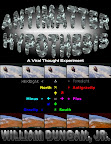A
supernova is an exploding star that becomes a neutron star or a black hole. A
nova exhibits a different mechanism, where a white dwarf star accumulates hydrogen from a companion star, and a cataclysmic nuclear explosion ensues. At least that’s the conventional explanation.
Can stellar objects less dense than black holes produce hydrogen protoplasm? The Crab Nebula presents an intriguing case, where X-ray emissions might represent annihilations attenuated by Compton scattering. Integral, an orbiting gamma-ray observatory satellite, discovered an antimatter cloud near the center of the Milky Way galaxy. The distribution of the antimatter cloud corresponds with the configuration of X-ray binary stars.

Assuming that a white dwarf star can separate neutron antineutron pair production then the antimatter hypothesis can propose another mechanism for novas. If the source of nova hydrogen is pair production, then the companion star might be the opposite polarity of matter. The conventional binary system would have different gravitational dynamics than a matter antimatter binary system, which means the antigravity hypothesis leads to a prediction that can be verified observationally. A matter matter binary system would need orbital velocity to keep the two stars from colliding. A matter antimatter binary system would not. If the orbital velocity of a binary system proves inadequate to maintain separation, then antigravity becomes a viable explanation.









No comments:
Post a Comment